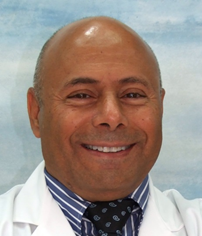Professor Avner Shemer, MD, did his residency in dermatology and venereology at the Rambam Medical Center, Haifa, Israel. He trained in the Mycology Laboratory, Rambam Medical Center, Haifa, Israel, and at the Mycology Laboratory, Institute of Dermatology at Guy’s Hospital, London, UK. Shemer received his medical degree from Tel-Aviv University, Israel.
Currently, Prof. Shemer is a Senior Physician, Dermatology and Venereology, at the Chaim Sheba Medical Center, Tel Hashomer, Israel, specializing in Skin and Venereal Disease; and an associate clinical professor – Tel-Aviv University – Department of Dermatology and Venereology at the Chaim Sheba Medical Center, Tel Hashomer. He also serves as head of the Israel Council of Dermato-mycology and Nail Disorders, and an advisor on mycological disorders to several drug companies.
Prof. Shemer has over 100 publications, and gives many lectures in basic research and clinical dermatology on fungal/nail disorders in particular. |
|

Prof. Avner Shemer
|
Combination of nail psoriasis and onychomycosis diagnosis and treatment
Epidemiology
- Nail psoriasis occurs more frequently in patients with severe skin disease
- There is a positive association between nail psoriasis, duration and severity of skin lesions and joint involvement.
- Nail changes occur in 20% to 90% of patients with psoriasis. Only 1-5% have pure nail disease without skin lesions.
- Nail psoriasis is 10% more common in males , and occurs more in obese people.
- Nail psoriasis is not treated effectively despite it’s high prevalence.
Clinical features
- Nail involvement has a serious negative impact on functioning and quality of life.
- Nail changes may be a predictor of possible inflammatory joint damage ( psoriatic arthritis) and serves as a visible indicator of disease activity.
- Nail matrix psoriasis presents as pitting, leukonychia, erythema of the lunula and dystrophy.
- Nail bed psoriasis presents as “oil drop“ discoloration, splinter hemorrhages, subungual hyperkeratosis and onycholysis.
Diagnosis
- Pure onychomycosis is differentiated from combined onychomysis and psoriasis by presence of hyphae in direct smear and positive fungal culture.
- In case of yeasts and/or moulds it is necessary to have 3 repeated positive cultures of same yeast/mould.
Treatment
- Etretinate may worsen nail disease by causing paronychia.
- Methotrexate and cyclosporine act by changing the immune system and thus may aggravate onychomycosis.
- Terbinafine and itraconazole has been reported to aggravate psoriasis
- Fungal infection has to be treated first in order to prevent koebnerization, and only after that psoriasis should be treated also.
|
Tinea pedis pathogenesis diagnosis and treatments
Introduction
- KOH microscopy smear and fungal culture are 2 common way to diagnose fungal infection.
- Definition of successful fungal infection treatment - he organism must be present at the beginning of the treatment and disappear by the end of the treatment.
- Nail disease is perceived by the patient as redness, peeling of the skin, itch and a burning sensation.
- Dermatophytes have different enzymes that dissolve the stratum corneum which is later absorbed by fungal cells as an energy source.
Clinical features
- Tinea pedis is acute or chronic scaly and red plaques, located between the 4 and 5 toes on both feet.
- Symptoms include: itch, burning sensation, peeling of the skin, redness, maceration, cracks and blisters.
- Interdigital itch appears first, it later may spread to the sides of the feet.
- In 80% of patients fungal infection is bilateral.
- In 20% - 40% of patients fungal infection spreads beyond interdigital area to involve sides of feet.
- Fungal infection can spread to toenails and hand nails and there may be a secondary bacterial infection.
Infected tinea pedis
- Probiotic bacteria Janthinobacterium lividum inhibit trichophyton in vitro. It is possible that pathogenic bacteria inhibit dermatophytes in vivo , thus explaining the false negative KOH microscopy in infected tinea pedis.
- In evaluation of infected tinea pedis it is important to start with bacterial culture. Fungal component does not inhibit bacterial component.
Treatment
- Allylamines in-vitro act as fungicides regardless of the drug concentration.
- Azoles in-vitro at low concentrations are fungistatic and at high concentrations are fungicidic.
- Lamisil once is a film forming solution that dries out immediately after the application and creates a film which makes the skin clear and smooth.
- The film continuously delivers the active ingredient – Terbinafin at high concentrations to the skin.
Summary
- Identify the clinical presentation of infected tinea pedis.
- Treat bacterial infection first
- Diagnose and identify fungal infection
- Treat fungal infection
- Continue preventive treatment
|